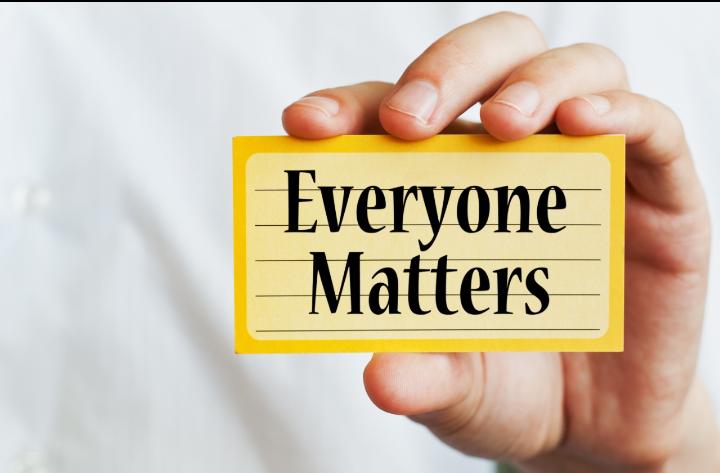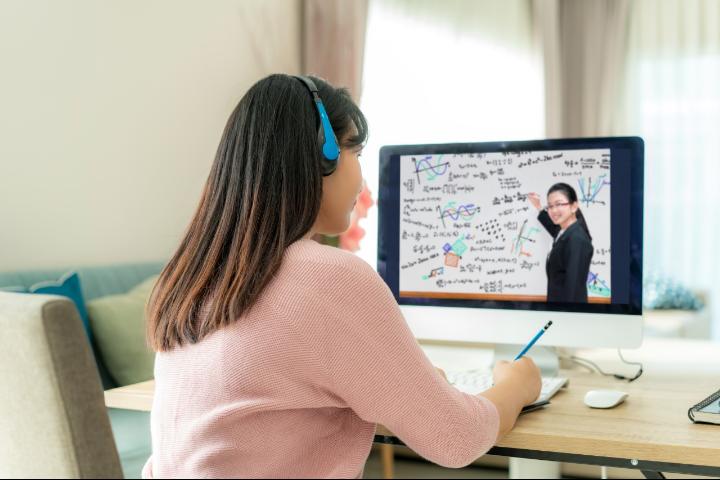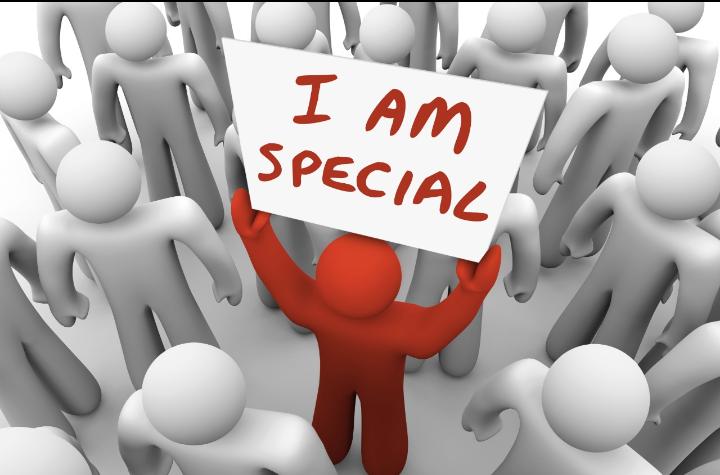Inclusive E-learning challenges in Morocco
Moroccan education system in the global context
By Dr. Mustapha Aabi

The World Declaration on Education for All (EFA) (1990) and the high-level Unit Summit on Millennium Development Goals (MDGs) emphatically stressed the importance of meeting the educational needs for all children, youths and adults. UNESCO has been mandated to lead this global movement within the international community to reach EFA. A concerted determination to promote education “became almost synonymous with ensuring that every child is in school” noted the UNESCO in its EFA global monitoring report (2015: 41). This philosophy is reflected in Moroccan education policies and regulations which started with the 1963 royal decree making basic education from the age of 6 to 15 years old compulsory. Education budgets have since increased significantly. More recently, the 3-year National Education Emergency Support Program, which started in 2009 but terminated earlier in 2011, spend nearly 5 billion US dollars over two years. In a way, these concerted efforts in terms of spending, policy and regulations seem to have yielded the desired results in line with the EFA goal as primary school enrolment reached 99.5% in 2013 according to UNICEF 2014 report. However, according to the same UNICEF report, only 88% and 61% were enrolled for middle and secondary education respectively. In rural areas, the enrolment numbers are much lower, 69.5% in primary, 30.6% in secondary for boys and less than 21.9% for girls, which is very alarming considering that the fact that the rural population represents nearly 40% of the total population in Morocco according World Bank estimate of 2016.
International efforts undeniably led to a significant increase in school enrolment – 90.7% of primary age students worldwide were enrolled in school – and gender parity in primary enrolments rates – GPI of 0.96 has been achieved (World Bank 2012). This drive towards universal access to primary education, which was more applicable to the poorest countries rather than to more developed nations, albeit successful, has not been without setbacks in many parts of the world such as Morocco. International student achievement studies revealed low academic achievement of Moroccan students. Learning achievement scores in the TMSS 2015 were 377 and 384 out of 1000 for Grate 4 and Grade 8 respectively, ranking 47 out the 49 countries that participated in the assessment. Seventy four percent of Moroccan students did not reach even the lowest of four benchmark levels, while none at all reached the highest benchmark level in the TIMSS 2011 (World Bank 2013). Morocco also underachieved in the PIRLS 2016 International Results in Reading, scoring 358 out of 1000 for Grade 4, and ranking 48 out 50 participating countries.
Meanwhile, the international community came to realize that the scorecard of the EFA for developing countries such as Morocco has not been as expected and that focus on universal primary enrolment meant less attention on the effectiveness on teaching itself. Admittedly, education quality in Morocco remains low characterized by the poor learning outcomes and a weak integration of graduates in the labor market, concedes the World Bank (11 September, 2013). To this effect, the most recent World Bank initiative to improve global education has shifted focus from “access and kids in seats, to one where we’re now really going to focus on outcomes and results” says the World Bank’s president, Jim Yong Kim (The Guardian, Monday 18 May 2015 14.56 BST). These outcomes are measured by international student assessments such as TIMSS, PIRLS, PISA and the World Bank SABER and ECD toolkits on the basis of pre-determined educational indicators and standards.
Inclusive education in Morocco: Is it a path for a universally designed education?
Inclusive education means not only that all children go to school, but more importantly, it is an educational provision that adapts to respond to natural or socio-culturally constructed differences between students. According to UNESCO (2005), inclusive education is “a process of addressing and responding to the diversity of needs of all learners through increasing participation in learning, cultures and communities, and reducing exclusion from education and from within education.”
Inclusive education in Morocco, however, is particularly characterized by a lack of understanding of the conceptual scope of inclusion when applied to the field of education. It has been inadvertently associated with disability. To this effect, the country has passed several national legislations and ratified international agreements which guarantee the rights of special needs. As in many countries, the implementation of inclusive education in Morocco has gone through a series of conceptual changes. It started with special needs schools totally isolated education settings, then special needs classrooms within mainstream schools referred to as CLIS with the aim of providing special needs children with basic education that will then enable them to enter the regular school path, and more recently inclusive education referred to as CEI ending the isolationist approach to special education and considering the whole school an inclusive institution. This is a significant leap in policy given the unfavorable social and economic factors. In practice, the policy is far from reaching its intended goals due to a lack of clear pedagogical framework. Special needs children have been included in mainstream classrooms but have not been provided with the opportunities to succeed due to learning environments which lack the flexibility in the ways diverse learners can learn and be taught (National evaluation commission for education, training and scientific research, 2019).
Based on ample evidence from recent research worldwide (e.g. Bracken and Novak 2019), Universal Design for Learning (UDL), as an innovatively useful approach for inclusive education, can clearly inform education policies and support the development of a curriculum reference framework for inclusive education in Morocco capable of providing a favorable environment supporting diverse learning opportunities in schools as well as in HE settings for marginalized students in terms of sex, geography, and ability.
Online Learning: Is It the Solution?
For several years now, Moroccan universities have been embracing the digital age with a distinctive rise of online platforms and online training despite the fact that until today online programs, including online degrees from overseas universities, are not recognized in Morocco. Unsurprisingly, efforts to digitize education in Morocco are mostly sporadic attempts from individual lecturers to reach out to their students and keep them engaged.
With the recent pandemic shutdown of schools and universities, online education has received an incredibly increasing attention. Given the current circumstances, it has been adopted by the ministry of education as the only possible alternative to classroom learning, and hailed by the media and various stakeholders including policy makers as the way-forward. Now, setting up the course for the development and recognition of online programs in Morocco is just a matter of ‘when not if’. Despite the understandably hastened transition to online education as a result of the pandemic, it did indeed offer a way-out, the only way-out. Teachers and students are now wondering if these significant changes brought about by the pandemic are here to stay and to what degree. Logically, answering this question should depend on examining to what
extent it served and will serve its purpose in terms of learning outcomes. There is ample evidence from previous research, prior to the pandemic, showing the advantages of online education which can potentially help in providing a more favorable environment for effective teaching and learning in Morocco.
Over-crowdedness: The Standing Committee for the Governance of National Education and Training highlighted the necessity to overcome the issue of overcrowded classrooms (The High Council for Education, Training and Scientific Research 24/10/2017). Online education is a viable option to eliminate the problem of over-crowdedness and provide more favorable learning opportunities (El-Khouly, 2018:75). Allowing students to attend their courses online would mean fewer students in Moroccan packed schools and universities.
Cost: Morocco has made strong commitments to education which led to increasing education expenditures. The index of the total of the national education budget has been since 2009 at an approximately 5% average rate. (EFA National Report: Morocco, 2014). The escalating number of students increasingly represents encumbering challenges to maintain education quality and is also subsequently translated into insufficient investment in resources, teacher development and training, and learner accessibility (World Bank Report, May 30, 2019). As online education cost is far less than traditional on-campus education (Colbeck & Southworth, 2014:213) it can provide for Morocco a good opportunity to manage the available financial recourses to expand accessibility and favorable learning environments. A comparative simulation of cost in Morocco found that a face-to-face on-campus would cost three times more than a distant online course (Revue de l’etudiant marocain, 2014:4).
Learner Engagement: Lack of positive engagement has a severe impact on student retention. Drop-out rates are significantly high. Only 53% of students enrolled in middle school continue on to high school and less than 15% of first grade students are likely to graduate from high school (USAID, May 07, 2019). According to the ministry of education, only 37% of the Moroccan population aged between 18 and 22 enroll in universities, 16.5% of whom drop out in their first year and 8.1 percent drop out in the third (Ben Saga, Morocco World News, Nov 7, 2018). A survey conducted by the Observatoire National de Développement Humain in 2012 found that the major reason (31.9%) mentioned by the population surveyed for school dropouts is “child does not like the school” (World Bank Report, May 30, 2019). The flexibility of online learning offers students the freedom to choose their appropriate learning styles, at their own pace, and in the right time that does not clash with other life responsibilities. Such learning conditions, usually exclusive to online education, are likely to increase student engagement and motivation (Caravias. 2018:978).
Accessibility: According to the survey carried out by the Observatoire National de Développement Humain in 2012, the second major reason (13.6%) cited by the population surveyed for school dropouts is “the household is far from school” (World Bank Report, May 30, 2019). Geographical distance is not the only challenge to education accessibility in Morocco. Other barriers arise as a result of physical, sensory and cognitive disabilities. According to a USAID report (2016), the education system in Morocco has limited ability to provide education for all children with disability and that their vast majority do not receive any form of education. The current state of education accessibility in Morocco can benefit greatly from the implementation of online learning. Factors related to student disabilities, location for life circumstances no longer limit access to education due to e-learning (Renes, 2015).
While online education offers many possibilities for increasing accessibility, it also presents unique challenges. One of the major challenges in the context of Morocco is digital readiness of teachers and learners, the establishment and the technology provider. A large part of the teacher and student population require varying degrees of IT proficiency enhancement. Educational establishments, in their majority, lack the proper infrastructure in terms of equipment, online curricula and other online pedagogical materials. Relatively low bandwidth and weak internet can affect the quality of access, presentation and participation in online courses.
Universally designed online education: A way forward
Transitioning to a universally designed online environment implies anticipating the diverse needs of students that are likely to enroll in the course, then proceeding with its design accordingly. In this case, UDL represents the guiding framework for the design of learning environments that are accessible and effective for each learner to succeed based on scientific insights into how students learn, namely, engagement, representation, and action and expression.
Engagement: When considering this principle, we look into how teachers provide a variety of ways to motivate and engage students. The flexible nature of online courses allows for the provision of considerable options for the types of resources and diverse engaging learning opportunities to maintain focus and motivation of students.
Representation: When considering representation, we look into how teachers provide a variety of ways for students to access and interact with their course content. Unlike the limiting nature of a traditional classroom especially in terms of time constraints, an online course allows for unlimited possibilities to present key concepts in multiple ways (lectures, worksheets, videos and experiments), formats (visual, verbal and written), and reading/complexity levels (simple/easy to complex/challenging).
Action and expression: When considering action and expression, we look into how teachers provide a variety of ways for students to demonstrate their learning. Online environments empower each student by facilitating the option for her/him to choose the type of assignment and the format of submission (written, audio, video and multimedia) to demonstrate reaching the intended learning goals.
The face of higher education has changing drastically with the recent pandemic. Online learning has become a sine qua non for the design or creation of university programs. While this paradigm shift brings with it several challenges, it offers greater opportunities for better accessibility and diversity. It positions online education as a more effective force to make education in Morocco more inclusive.
References:
Ben Saga, A. 2018. Half of Moroccan University Students Drop out Before Graduation. Half of Moroccan University Students Drop out Before Graduation
Bracken, S. and Novak, K. (eds.) 2019. Transforming higher education through Universal Design for Learning. London & New York: Routledge.
Caravias, V. 2018. “Teacher Conceptions and Approaches to Blended Learning Environments”. In Online Course Management: Concepts, Methodologies, Tools, and Applications. edited by Management Association, Information Resources.
Colbeck, C.L. and Southworth, M. 2014. “Which Way Toward Quality and Survival?” In S. Freeman, L. S. Hagedorn, L.F. Goodchild and D.A. Wright (eds.) Advancing Higher Education as a Field of Study. Virginia: Stylus.
CSERRS. 2019. Évaluation du modèle d’éducation des enfants en situation de handicap au maroc: vers une éducation inclusive.
EFA National Report: Morocco, 2014. https://unesdoc.unesco.org/ark:/48223/pf0000231799
El-Khouly, M.M. “Egypt” 2018. In A.S. Weber and S. Hamlaoui (eds). E-learning in the Middle East and North Africa (MENA) Region. Cham, Switzerland: Springer.
Renes, S.L. 2015. Increasing Access to Higher Education Through E-Learning, E-Learning – Instructional Design, Organizational Strategy and Management. Boyka Gradinarova, IntechOpen, https://www.intechopen.com/books/e-learning-instructional-design-organizational-strategy-and-management/increasing-access-to-higher-education-through-e-learning
Revue de l’etudiant marocain – Spécial rentrée – Édition 2013 / 2014 – N° 108. https://www.rekrute.com/files-press-media/e-lerning_2014.pdf
USAID. 2019. Morocco: Education. https://www.usaid.gov/morocco/education
USAID. 2016. Situation and Needs Assessment for Students Who are Blind/Low Vision or Deaf/Hard of Hearing in Morocco. https://iercpublicfiles.s3.amazonaws.com/public/resources/Morocco%20Inclusion%20Study%20Report%20ENGLISH.pdf
UNESCO. 2015. Education for All 2000-2015: Achievements and challenges: EFA Global Monitoring Report.
World Bank Report No: PAD3157, May 30, 2019. http://documents.worldbank.org/curated/en/908441561140203130/pdf/Morocco-Education-Support-Program-Project.pdf
UNESCO, 2005. Guidelines for inclusion. https://unesdoc.unesco.org/ark:/48223/pf0000140224
World Bank. 2013. Maintaining Momentum on Education Reform in Morocco. https://www.worldbank.org/en/news/feature/2013/09/11/maintaining-momentum-on-education-reform-in-morocco
[display-posts order=”ASC”]





